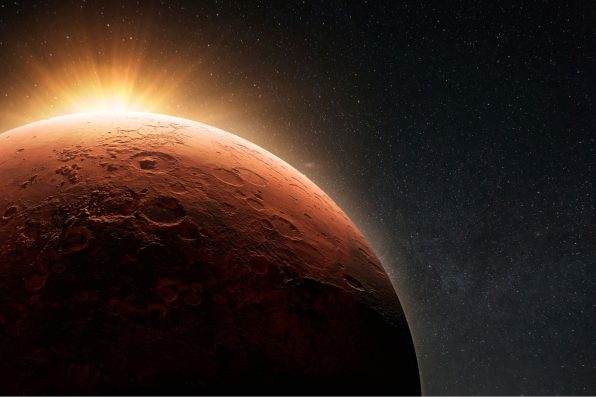For nearly four years now, NASA’s Perseverance rover has been exploring the surface of Mars as part of the Mars 2020 mission, traversing across ancient terrain, gathering samples, and investigating whether the Red Planet was once able to support microbial life.
Recently, Perseverance used its SHERLOC WATSON camera to capture an image of the Malgosa Crest abrasion patch at night in a location called the “Serpentine Rapids.”
The image revealed white, black, and greenish spots within the rock. The composition of the rocks is unclear, but scientists are still excited about the mysterious find because there is a good chance that Perseverance will make more unique discoveries.
“One of the biggest surprises for the rover team was the presence of drab-green-colored spots within the abrasion patch, which are composed of dark-toned cores with fuzzy, light green rims,” said NASA.
To obtain the images of the rock, Perseverance made an abrasion patch in a rock outcrop known as “Wallace Butte.” The abrasion patch was roughly two inches in diameter.
The large green spot in the upper left section of the image was about two millimeters in diameter.
The image was taken on August 19. By then, Perseverance had been on Mars for 1,243 Martian days.
On Earth, rocks that look similar to red Martian rocks usually get their color from oxidized iron. It is the same type of iron that might accumulate on our cars and make our blood red.
The green spots that are visible in the new image are also found in red rocks on Earth. They are formed when liquid water seeps through sediment before hardening into rock.

Sign up for Chip Chick’s newsletter and get stories like this delivered to your inbox.


